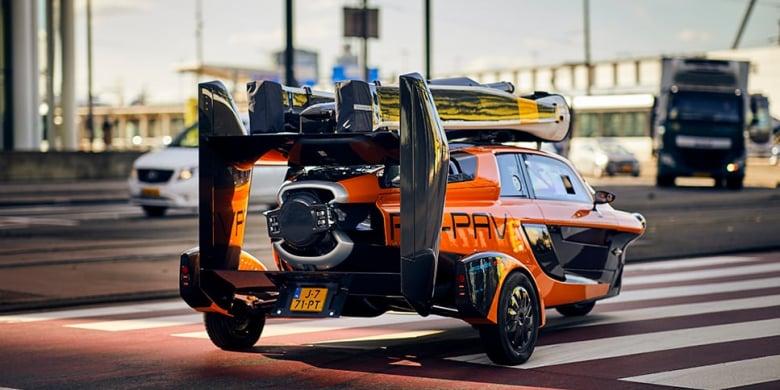PAL-V Achieves EU’s Roadworthy Certification for Its Flying Car

You have to crawl before you walk. And, apparently, you have to drive before you fly. PAL-V, a Raamsdonksveer, Netherlands-based developer of what it hopes will be among the world’s first flying cars (if not the first), obtained approval from the European Union to drive its vehicle on European roads. Sporting license plate J-7 71-PT, PAL-V’s Liberty is now street legal.
Drivers may soon see the manufacturer’s Liberty model on byways from Amsterdam to Antwerp and beyond as the company continues to hone its vision for a roadable aircraft.
A select group of buyers can sign up now to be among the first 90 owners of the Dutch flying car to receive the Pioneer edition of the Liberty. PAL-V promises to deliver those vehicles anywhere in the world.
With Italian interior and exterior designs, carbon fiber-based materials and a dual engine, the Liberty’s wings and rotor fold while traversing city streets and highways and then expand when the driver/pilot is prepared to go airborne.
A self-stabilizing aircraft, the PAL-V uses curve stabilization technology and design. Its 100HP engine has a range of about 800 miles (1315 kilometers)
Thinking ahead, PAL-V also offers the Flydrive Academy, a six-module course to assist buyers in obtaining a gyroplane private pilot license. Sticker price is currently US$599,000.
The PAL-V has a maximum speed of 99MPH (160KPH) on the ground and 112MPH (180KPH) in the air. It’s got a maximum of altitude of 11,500 feet (3,500 meters). The company hopes to achieve certification from the European Aviation Safety Agency (EASA) by 2022.
Want to continue to stay up-to-date about the latest developments in the eVTOL industry? Subscribe to AeroCar Journal now. It’s FREE (for a limited time)! Join us on Twitter for the latest news, analysis, and insight about the eVTOL industry. AeroCarJ


